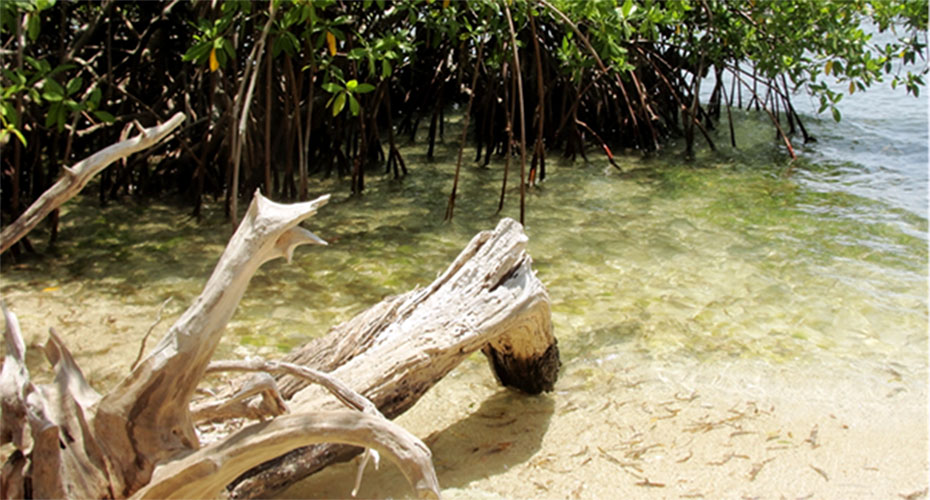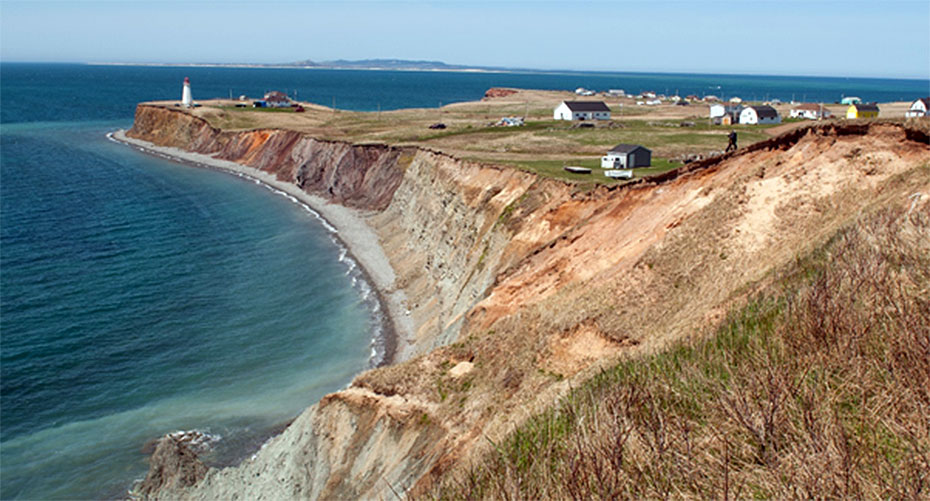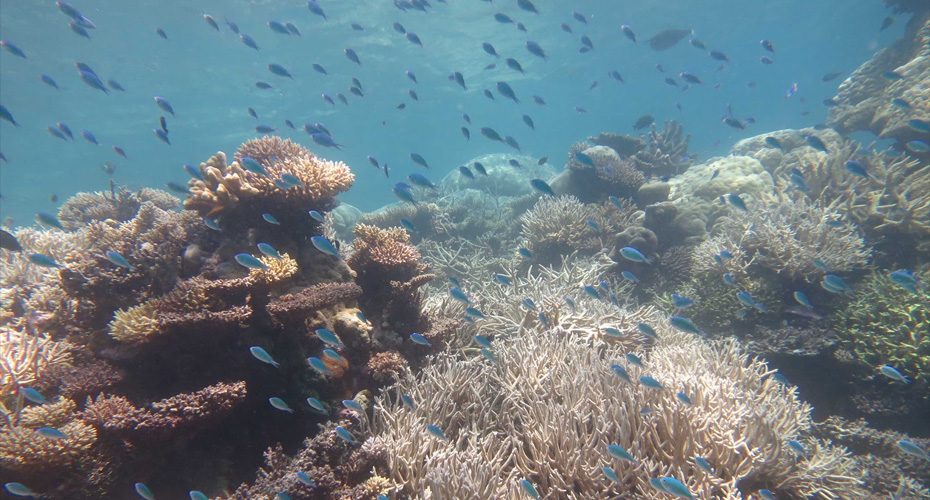Rivers and Coasts
Projects
Supervisors: Dr Steven Palmer (email: s.j.palmer@exeter.ac.uk) and Dr Matteo Vacchi (email: M.Vacchi@exeter.ac.uk)
Project Description
The scientific issue
Erosion of the UK coastline presents major management issues given high coastal population densities, the high value of coastal land and its intensity and diversity of use. For example, during the winter of 2013/2014 a succession of major storms caused widespread damage to coasts throughout England, causing major transport interruptions such as the 2-month closure of the train line at Dawlish, damage to coastal infrastructure and beach depletion.
The UK Regional Coastal Groups develop Shoreline Management Plans to assist with coastal management, but the forecasts of future coastline position are currently over-simplistic and do not capture processes of Coastal Change. This project aims to make improved estimates of rates and processes of coastal change, with particular emphasis on coastal cliffs, with a view to develop better understanding of the links between environmental conditions and coastal erosion events.
The research
The successful student will use LiDAR and airborne imagery from the Channel Coast Observatory and Environment Agency to quantify the spatial and temporal variations in rates and patterns of erosion at selected sections of UK coastline. Supplementary datasets such as rainfall observations and wave buoy & tide gauge records will be used to characterise the prevailing sea conditions preceding individual erosion events, in order to investigate environmental drivers of coastal erosion. The student needs to have strong GIS and numerical skills, and at least a basic understanding of Coastal systems.
References
Young, A. P., & Ashford, S. A. (2006). Application of airborne LIDAR for seacliff volumetric change and beach-sediment budget contributions. Journal of Coastal Research, 307-318.
Masselink, G., Scott, T., Poate, T., Russell, P., Davidson, M., & Conley, D. (2016). The extreme 2013/2014 winter storms: hydrodynamic forcing and coastal response along the southwest coast of England. Earth Surface Processes and Landforms, 41(3), 378-391.
Supervisors: Dr. Dunia H. Urrego (email: d.urrego@exeter.ac.uk) and Dr Barend van Maanen.
Project description
The scientific issue
Urban growth and climate change impacts are posing serious pressure on mangrove forests worldwide. Mangroves are therefore rapidly disappearing and important ecosystem services may be lost. Ecosystem services provided by mangroves include breeding grounds for fisheries and food security, coastal protection and wave dissipation, and carbon storage. Therefore, mangrove conservation and restoration can be important parts of the solution for reducing risks to coastal communities and preserving ecosystem services.
Seen as a first line of defense against sea level rise, salinization, and subsidence, restoration of key coastal ecosystem such as mangroves is now actively promoted through Blue Carbon initiatives. Yet, much remains to be done in assessing the ecological baselines for mangrove ecosystems to identify sustainable restoration goals that maximize ecosystem resilience.
The research
The aim of this Master’s by research project is to determine ecological baselines for mangrove ecosystems and to discern what processes control mangrove carbon sequestration in tropical coastal ecosystems. This project offers an exciting opportunity to conduct a research project using sediment cores collected from the Magdalena River Delta in Colombia. The Magdalena is the largest river in Colombia and it is within the top 10 in world for sediment supply. Sediment cores have been collected from two contrasting lagoons in the Delta and are kept in the Geography cold storage. One lagoon is neighbouring the city of Barranquilla and is highly degraded, while mangroves in the other lagoon are flourishing. The project would be interdisciplinary and could combine coastal geomorphology, ecology, palynology and geochemistry. Laboratory analysis may include organic carbon quantification, sedimentology, 210Pb analyses, palynology and charcoal analysis. There is also a possibility to conduct fieldwork in Colombia and collect data on carbon decomposition. The research project can also be developed to fit the student’s interests.
References
Alongi, D.M., 2012. Carbon sequestration in mangrove forests. Carbon management, 3(3), pp.313-322.
Mcleod, E., Chmura, G.L., Bouillon, S., Salm, R., Björk, M., Duarte, C.M., Lovelock, C.E., Schlesinger, W.H. & Silliman, B.R. 2011. A blueprint for blue carbon: toward an improved understanding of the role of vegetated coastal habitats in sequestering CO2. Frontiers in Ecology and the Environment, 9(10), pp.552-560.
van Maanen, B., Coco, G., & Bryan, K. R. 2015. On the ecogeomorphological feedbacks that control tidal channel network evolution in a sandy mangrove setting. Proc. R. Soc. A, 471(2180), 20150115.
Supervisors: Dr Rob Barnett (email: r.barnett@exeter.ac.uk); Dr Angela Gallego-Sala (University of Exeter); Prof Pascal Bernatchez (University of Quebec at Rimouski); Prof Dan Charman (University of Exeter)
Project description
The scientific issue
The rate of global mean sea level rise has increased from 2.4 ± 0.2 mm yr-1 in 1993 to 2.9 ± 0.3 mm yr-1 in 2014 (Watson et al., 2015; Chen et al., 2017) and sea level will continue to rise into the future, regardless of current emissions targets (Nicholls et al., 2018). Rising global sea levels have major economic and societal impacts. However, the pattern of sea-level rise across the globe is not uniform. Spatial and temporal differences arise from patterns and fingerprints of geophysical processes that influence relative, volumetric and dynamic changes in the oceans (Milne et al., 2009). This means that some coastal locations are experiencing higher than global average rates of sea-level rise and are more vulnerable than others to future changes.
The east coast of Canada is an exciting region to study relative sea-level changes due to the large influence that glacial-isostatic adjustment has on sea-level trends. Ablation of the North American (Laurentide) Ice Sheet during the Holocene has resulted in land uplift towards inland Canada and subsidence at eastern locations along the North Atlantic seaboard. Before regional projections of future sea-level rise can be accurately predicted in eastern Canada, a better understanding of the processes that drive local- (e.g., sediment dynamics), regional- (e.g., vertical land motion and ocean-mass redistribution) and global- (e.g., ocean volume changes) scale sea-level changes is necessary (Barnett et al., 2019).
The research
This project will research past and ongoing relative sea-level changes in eastern Canada using a multi-proxy palaeo-data approach, with the aim of quantifying the contributions from different processes. The researcher will reconstruct sea-level changes at multiple locations around the Gulf of St Lawrence over recent centuries and millennia by: i) defining modern relationships between sea level and salt-marsh microrganism indicators (e.g., testate amoebae, foraminifera), ii) analysing sedimentary archives for fossil assemblages and applying relationships determined in (i) using a transfer function (see Barlow et al. (2013) for a review of these techniques), and; iii) establishing a chronological framework for new sea-level records by using radionuclide techniques (e.g., 210Pb) at the University of Exeter Radiometry Laboratory, radiocarbon analysis and age-depth modelling. Material for palaeoenvironmental analysis is currently available, although it is likely that there will be the opportunity for fieldwork in eastern Canada and / or an academic research visit to collaborating institutes.
The project has a focus on laboratory work and the researcher will be taught how to prepare and analyse salt-marsh samples for microorganism (e.g., testate amoebae, foraminifera) content. Applicants with (palaeo)ecological experience (e.g., microorganism sample preparation / analysis) are encouraged to express their interest. This project will be run in collaboration with the Laboratoire de dynamique et de gestion intégrée des zones côtières at the University of Quebec at Rimouski.
References
Barlow, N.L.M. et al. 2013. Salt marshes as late Holocene tide gauges. Global and Planetary Change, 106, 90-110.
Barnett, R.L. et al. 2019. Late Holocene sea-level changes in eastern Quebec and potential drivers. Quaternary Science Reviews, 203, 151-169.
Chen, X. et al. 2017. The increasing rate of global mean sea-level rise during 1993-2014. Nature Climate Change, 7, 492-495.
Milne, G.A. et al. 2009. Identifying the causes of sea-level change. Nature Geoscience, 2, 471-478.
Nicholls, R.J. et al. 2018. Stabilization of global temperature at 1.5°C and 2°C: implications for coastal areas. Philosophical Transactions of the Royal Society A. 376, 20160448.
Watson, C.S. et al. 2015. Unabated global mean sea-level rise over the satellite altimeter era. Nature Climate Change. 5, 565-568.
Supervisors: Prof. Rolf Aalto (email: rolf.aalto@exeter.ac.uk), Prof. Andrew Nicholas (email: A.P.Nicholas@exeter.ac.uk).
Project description
The scientific issue
The vast majority of organic carbon (Corg) is stored in sedimentary rock compared to atmosphere + biosphere + ocean (by a factor of > 1000x). Large river systems transport and bury huge loads of Corg throughout giant lowland basins that form some of the largest sedimentary deposits on Earth, but the mechanisms and rates of burial over annual to century timescales are poorly constrained. Fluvial processes and fluxes may therefore represent a significant player in Earth’s carbon cycle (Aufdenkampe et al., 2011), especially given rising seas that tend in turn to lead to accelerated sediment and carbon sequestration. Such deposits may be laid down in coordination with ENSO flooding (Aalto et al., 2003), or typhoons that are shifting as climate changes (Darby et al, 2016).
The research
This project will develop understanding of carbon deposition in river sediment by measuring carbon concentrations for a large set of previously dated cores collected across 1000s of kilometers of floodplains in the Amazon, the lower Mekong, Papua New Guinea, the Danube, and elsewhere. With all project cores already in cold storage at Exeter and necessary lab equipment available to students, research can be focused and efficient in terms of producing datasets of lasting and likely global significance. Previous measurement of similar samples has led to important insights, such as the observation that the island of Papua New Guinea exports more sediment-associated carbon to the ocean than the entire Amazon basin (Alin et al., 2008).
This project will appeal to students who like to measure things, and work in a research lab environment. Unlike models or statistical fits that may be replaced by new advances, good field measurements are eternally valuable. Therefore, it is anticipated that the laboratory focused work proposed here may provide data that leads to novel insights into the significant role of river floodplain deposits may play in modulating Earth’s carbon cycle.
References
R Aalto, L Maurice-Bourgoin, T Dunne, DR Montgomery, CA Nittrouer, JL Guyot, 2003, Episodic sediment accumulation on Amazonian flood plains influenced by El Nino/Southern Oscillation, Nature, 425, 493-407.
SR Alin, R Aalto, MA Goni, JE Richey, WE Dietrich, 2008, Biogeochemical characterization of carbon sources in the Strickland and Fly rivers, Papua New Guinea, JGR Earth Surface, 113, F1.
AK Aufdenkampe, E Mayorga, PA Raymond, JM Melack, SC Doney, SR Alin, RE Aalto, K Yoo, 2011, Riverine coupling of biogeochemical cycles between land, oceans, and atmosphere, Frontiers in Ecology and the Environment, 9, 1, 53-60.
SE Darby, CR Hackney, J Leyland, M Kummu, H Lauri, DR Parsons, JL Best, AP Nicholas, R Aalto, 2016, Fluvial sediment supply to a mega-delta reduced by shifting tropical-cyclone activity, Nature, 539, 276.
Supervisors: Prof. Rolf Aalto (email: rolf.aalto@exeter.ac.uk), Prof. Andrew Nicholas (email: A.P.Nicholas@exeter.ac.uk).
Project description
The scientific issue
Much successful research has been published analyzing planform change of meandering and braided rivers in response to various forcings. However, generally lacking from these analyses are good topographic data to quantify variations in river valley slope and provide documentation of vertical infilling – both essential metrics for understanding driving energy gradients and volumetric responses of the systems for conveying and distributing water and sediment. The problem is that 1) high accuracy field survey data are rare, 2) previous spaceborne sensors presented challenges for accuracy and resolution, and 3) most large floodplains have significant vegetation coverage, making it difficult to determine bare earth elevations.
The new TanDEM-X instrument offers a way forwards, with lower resolution data (~90m) recently released for most of the Earth. Our recent work with the high-resolution (~12.5m) product has developed a promising means to identify and remove trees using various remote sensing techniques and machine learning – with the ultimate result of producing bare earth DEMs that check well against locations we have field data. We have also applied these same approaches using research-grade SRTM (~30m) and find the resulting product is suitable for comparison to the TanDEM-X data collected ~16 years later. Therefore, there are opportunities for comparing and differencing these two datasets.
The research
We have field survey data and have identified various locations that can be used to test these approaches, and would like to involve a student in their further development. After refining the techniques for an apt study area, the student would then focus on quantifying slopes that drive river flow, and the bar/floodplain infill for a particular study river. The ultimate goal will be producing generic findings about the 3D functioning of large river systems that are suitable for publication in a prominent journal.
This project will mainly use ArcGIS and Matlab, and will appeal to students who like working with cutting-edge DEM analysis and considering topographic controls/expressions of large river morphodynamics. We can provide access to research data, specialist software, fast data storage suitable for GIS, plus there may be an opportunity for the student to assist with a survey of river bank and floodplain topography along the Mekong River in Vietnam.
References
Wilson R.W. et al., 2009. Contribution of fish to the marine inorganic carbon cycle: Science, v. 323, p. 359–362, doi:10.1126/science.1157972.
Perry, C.T. et al., 2011. Fish as major carbonate mud producers and missing components of the tropical carbonate factory: Proceedings of the National Academy of Sciences, v. 108, p. 3865–3869, doi:10.1073/pnas.1015895108.
Salter, M.A. et al., 2018. Reef fish carbonate production assessments highlight regional variation in sedimentary significance: Geology, v. 46, p. 699-702, doi:10.1130/G45286.1
Supervisors: Prof Chris Perry (email: C.perry@exeter.ac.uk).
Project description
The scientific issue
here has been a growing interest in measuring the carbonate budget states of coral reefs, defined as the balance between the amount of carbonate produced by corals and other calcareous reef taxa, less that lost to processes of biological, physical and chemical erosion (Perry et al. 2008). Resultant carbonate budget states exert a major influence on rates of reef growth and on the capacity of reefs to maintain their physical structures. Measuring and monitoring changes in budgets is therefore now recognised as a key reef functional health indicator. Recent survey-based methodologies have opened up opportunities to measure the biological components of these budget states using consistent methodologies (see Reefbudget methodology).
These approaches have been applied globally and have, for example, supported assessments of within-country (Molina-Hernandez et al. 2020) and across region (Perry et al. 2018) budget states, quantified the impacts of sustained ecological decline on rates of coral carbonate production (Perry et al. 2014 Glob. Change Biol.), and the major impacts of the 2015-16 bleaching event on reef carbonate budgets on Indian Ocean reefs (Perry & Morgan 2017; Lange & Perry 2019). There has been a focus in this work on the links between contemporary reef ecology and budget states. In contrast, we lack much understanding of how budgets states have changed over the past few decades, a period defined by often rapid and accelerating ecological change. Such data are, however, urgently needed to provide a context for the changes we see occurring today.
The research
This project seeks to address this knowledge gap. The student will work with existing ReefBudget datasets to develop approaches for relating coral cover data for different coral taxa to equivalent rates of coral carbonate production. The aim will then be to test these ideas in a relevant field location, and on the basis of these tests to adjust/refine the conversion datasets developed. This will then support an assessment of past rates of coral carbonate production for different reef locations based on existing published and unpublished coral cover and reef structure datasets, envisaged to have a major focus on Indian Ocean reefs. The project will thus involve both a desk-based data analysis component, but also has the potential for involvement in some overseas fieldwork. There may also be scope to expand the project to do remote sensing and/or modelling based analysis of either larger spatial datasets or changes in budget states under future scenarios of ecological change.
The potential candidate needs a willingness to learn about not only carbonate budget processes and to be component with data handling, but also be keen to engage in potential field research opportunities. An existing SCUBA certification would be highly beneficial for this later component.
References
Molina-Hernández, A., González-Barrios, F., Perry C. T., Alvarez-Filip, L. (2020) Two decades of carbonate budget change on shifted coral reef assemblages: are these reefs being locked into low net budget states. Proceedings Royal Society B. 287: 20202305. doi.org/10.1098/rspb.2020.2305
Lange ID, Perry CT (2019) Bleaching impacts on carbonate production in Chagos: influence of functional coral groups on carbonate budget trajectories. Coral Reefs 38, 619-624. DOI: 10.1007/s00338-019-01784-x
Perry CT, Alvarez-Filip L, Graham NAJ et al. (2018) Loss of coral reef growth capacity to track future increases in sea-level. Nature 558: 396-400 doi.org/10.1038/s41586-018-0194-z
Perry CT, Morgan KM (2017) Bleaching drives collapse in reef carbonate budgets and reef growth potential on southern Maldives reefs. Scientific Reports. 7: 40581 doi:10.1038/srep40581
Perry CT, Steneck RS, Murphy GN, Kench PS, Edinger EN, Smithers SG, Mumby PJ (2014) Regional-scale dominance of non-framework building corals on Caribbean reefs affects carbonate production and future reef growth. Global Change Biology 21: 1153-1164.
Perry, C.T., Spencer, T. & Kench, P. (2008) Carbonate budgets and reef production states: a geomorphic perspective on the ecological phase-shift concept. Coral Reefs 27: 853-866.



